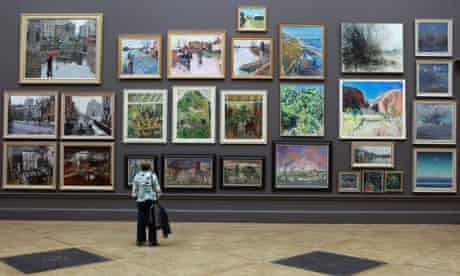Things You Probably Didn’t Know About Antique Oil Painting Identification
- Posted on 8th July 2022
- in American Art Buyers
- by Antique Art Buyers
One of the most common questions I get from art collectors and dealers is whether a work is an original antique oil painting or a reproduction. It may appear straightforward, but various techniques have been developed to make the artwork appear older. Aside from science, the best method to approach it is to collect all the necessary evidence and draw a conclusion regarding its uniqueness.
How to determine the authenticity of ancient oil paintings?

Here are a few ideas on how to authenticate an antique Asian art oil painting, especially with a focus on canvas work.
-
Duskiness of Canvas
The first identifier we may try to find is on the canvas’s back side. If the colour of the cloth is darker, it is an antique instead of a reproduction. The truth is that the older ones tend to darken with age.
There isn’t always a clear distinction between how black coarse cloth (cloth used for making oil paintings, also called canvas) is and how ancient it is. In addition, many canvases are relined, with around half of the ones we have.
-
Lining on the canvas
For regeneration purposes, lining is the act of connecting an older coarse cloth to a newer one. Paintings were frequently relined or lined during the nineteenth century, so yours may appear to be ancient but not as old as it is. Examine the canvas attentively to check if it has more than one layer to see whether it has been lined or not.
Fakers have been known to add replicas to older paintings to make them appear older. Furthermore, some oil paintings are created on paper, then transferred to canvas, and then relined, which can be visually confusing. The shiny paper has been put on top of the coarse fabric, as seen.
-
Dusky Stretcher frames
The design of European and American canvas stretchers has evolved through time, and they can help determine the date of a painting. What age does the wood appear to be? Are there any ancient duplicates lying around? You could even find some handcrafted wooden cylindrical rods if they’re a few hundred years old.
Over the years, several artists have made their own stretchers, which may look simple in construction and appear older than they are.
-
Cracks on the painting surface
The front of a vintage painting can also give further proof of its age as an antique work. Old oil (and fast dying) paintings, for example, will have a delicate pattern of cracks known as craquelure. It’s important to look at these thoroughly to determine if they appear to be aged naturally or unnaturally. If a painting has been thoroughly enamelled and the polish has yellowed over time, it’s a bit more difficult to identify.
It is possible to produce the look of cracks artificially, so if you’re unsure, get advice from professionals Chinese art dealers. Artificial cracking might often look a touch too uniform to be considered natural.
-
Paint that has been raised
Hold the canvas flat and examine all around the surface for raised paint, which is common in old oil paintings. However, keep in mind that the paint layer might potentially be completely flat, especially if it’s been relined.
-
Carefully look for the dots
Looking for dots under a 10x magnification is one technique to identify if you’re holding a current print. Mechanical/digital replicas have used dots in a regular pattern since the mid-twentieth century. Dots may also appear on older copies, although in an unpredictable pattern.
Many ancient replicas, such as antique engravings, have no dots at all. This is also true of recent high quality prints of excellent standard.
The other way to recognize old oil paintings
These things are easily identified by the experts of Asian antique appraisers. These are the dealers who buy old paintings at a good rate.
The only way to be certain is to analyze all of the evidence and make an informed guess. And, of course, if you’re unsure, get advice from a professional Asian antique dealer who is always active in clearing your doubts in the online world or in your local area.
Tags: Asian antique appraisers, Chinese art dealers, oil vintage paintings, Paintings



